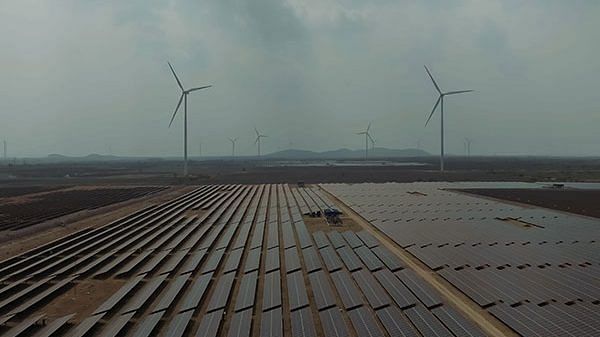India’s clean energy manufacturing sector has been at a crossroads. Amid geoeconomic shifts, technological disruptions, and sustained calls for localising production, the momentum from the “China+1” approach—expanding trade with other countries, including India, without fully discontinuing imports from China—has proven short-lived. The key takeaway is now becoming clear: India cannot afford to be seen merely as an alternative and must position itself as an indispensable player in global clean energy value chains.
Adapting to the rapidly transforming global green order demands a proactive approach—one that is not just reactive to external headwinds but is built on a clear, long-term vision. This calls for an “India plus Many” strategy, one that leverages India’s competitive strengths, advances technological expertise, and adapts to evolving geo-economic landscapes.
The 2025 Union Budget has tried to institutionalise initiatives that deepen and strengthen India’s manufacturing ecosystem through the rationalisation of import duties, skill development, export promotion, and proactive navigation of tariff and non-tariff barriers. In addition to the vulnerabilities of importing clean energy components from China, India’s exports from this sector are highly dependent on a handful of countries, such as the United States, Germany, France, and Japan. By leveraging the initiatives proposed under the 2025 Union Budget, India can begin to embed itself more strategically and widely in the global clean energy market. This will determine whether Indian manufacturers become globally competitive or continue to rely on state support in the medium to long term.
A recent study by the Council on Energy, Environment and Water (CEEW) highlights how a selective approach to indigenisation—with a focus on opportunistic components rather than on production across the entire value chain—may be more strategic. For instance, targeted efforts to manufacture polysilicon, aluminium foil, and synthetic graphite anodes—used in solar photovoltaics and lithium-ion batteries—could yield high innovation and economic spillover effects in India. Similarly, an export-oriented approach that doubles down on products such as solar EVA, junction boxes, and wind turbines can help manufacturers support domestic cleantech deployment while expanding their presence in important global markets. However, fully capitalising on these opportunities will require additional policy action in three key areas.
Also read: Skills shortage hobbles India’s clean energy aspirations
3 measures for India’s clean energy manufacturing
First, value chains need to be aligned with deployment targets. According to the Central Electricity Authority, India would need to deploy 35-40 GW of solar and 9-11 GW of wind power capacity annually by FY29-30. However, in FY23-24, only 3.3 GW of wind and 15 GW of solar were added—less than half the required yearly additions. Deployment targets will play a key role in providing a predictable source of demand, as opposed to the less predictable export markets, and will help ensure that manufacturing capacity is fully utilised. Moreover, less than 10 GW of cell manufacturing capacity will not be able to feed a demand pipeline of at least 40 GW per annum. Auctions and the scale-up of component production across the value chain must be synchronised in both scale and timing, given the lead time required to establish and expand cleantech manufacturing facilities.
Second, international partnerships need to be leveraged to secure supply chains. Multilateral partnerships and dialogues—such as the Quadrilateral Security Dialogue (QUAD), Minerals Security Partnership (MSP), and the Indo-Pacific Economic Framework (IPEF)—can help secure India’s position in global value chains as a demand base, procurer, and seller. On the supply side, exports will be crucial for achieving economies of scale and staying abreast of global technological advancements in cleantech. By leveraging the National Export Mission announced in the Union Budget, India must work to ensure minimal tariffs and non-tariff barriers on its exports through proactive bilateral negotiations with key markets like Africa, Turkey, and Australia. Such partnerships can help diversify export destinations while robust domestic demand serves as a buffer against potential trade barriers.
Third, capabilities for mineral processing and component manufacturing need to be developed. A resilient manufacturing industry requires stable access to processed minerals for components, capital goods, and testing infrastructure. India currently faces significant challenges in these areas, including 100 per cent import dependence on lithium carbonate, nickel sulfate, and cobalt sulfate. These minerals require careful processing to attain the purity and consistency needed for their applications. Given the strategic importance of minerals across key sectors, establishing domestic processing capabilities is imperative. The recent announcement of the National Critical Minerals Mission—with a total outlay of Rs 16,300 crore—the removal of import duties for waste and scrap for many minerals, and the exemption of import duties on EV battery manufacturing are welcome initiatives in the Union Budget. The National Centres of Excellence for Skilling and the PM Researcher Fellowship should take into account the skills and expertise required for critical minerals and clean energy manufacturing.
Indigenisation of clean energy value chains offers immense scope to boost industrial growth, accelerate the energy transition, and drive structural transformation. However, achieving this requires policy predictability, well-defined technology roadmaps, and stronger government-industry collaboration to drive indigenisation and enhance supply chain resilience. Active horizontal coordination between ministries—such as the Ministry of Power, Ministry of Mines, Ministry of Finance, and Ministry of New and Renewable Energy—will be key to implementing a cohesive strategy that supports the entire clean energy ecosystem. Collaboration between state and central governments to incentivise and support manufacturing will also be vital. Through continued support for ‘Making in India’, the cleantech sector is receiving a timely impetus for an ‘India plus Many’ vision, encouraging a collaborative clean energy transition. The stakes are high, and the time to act is now, before this window of opportunity closes.
Shruti Gauba (@shruti_gauba) is a research analyst and Rishabh Jain (@rjain88) is the senior programme lead at the Council on Energy, Environment and Water (CEEW). Views are personal.
(Edited by Prashant)






